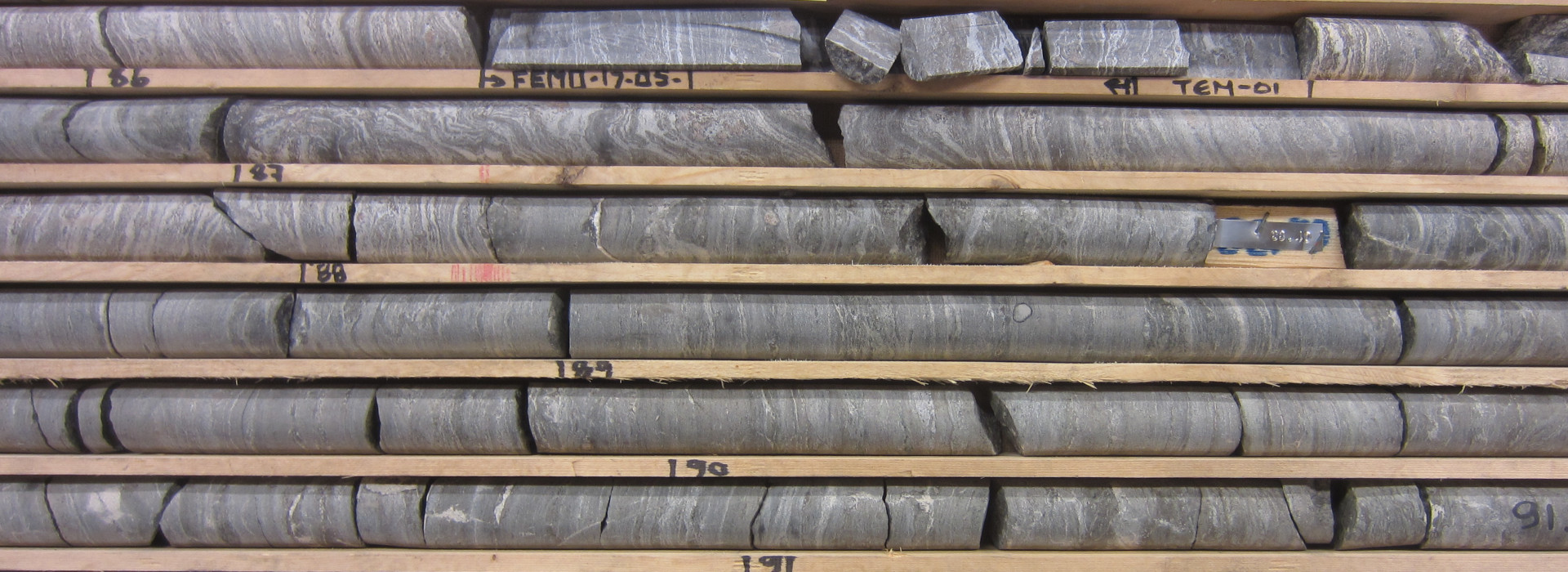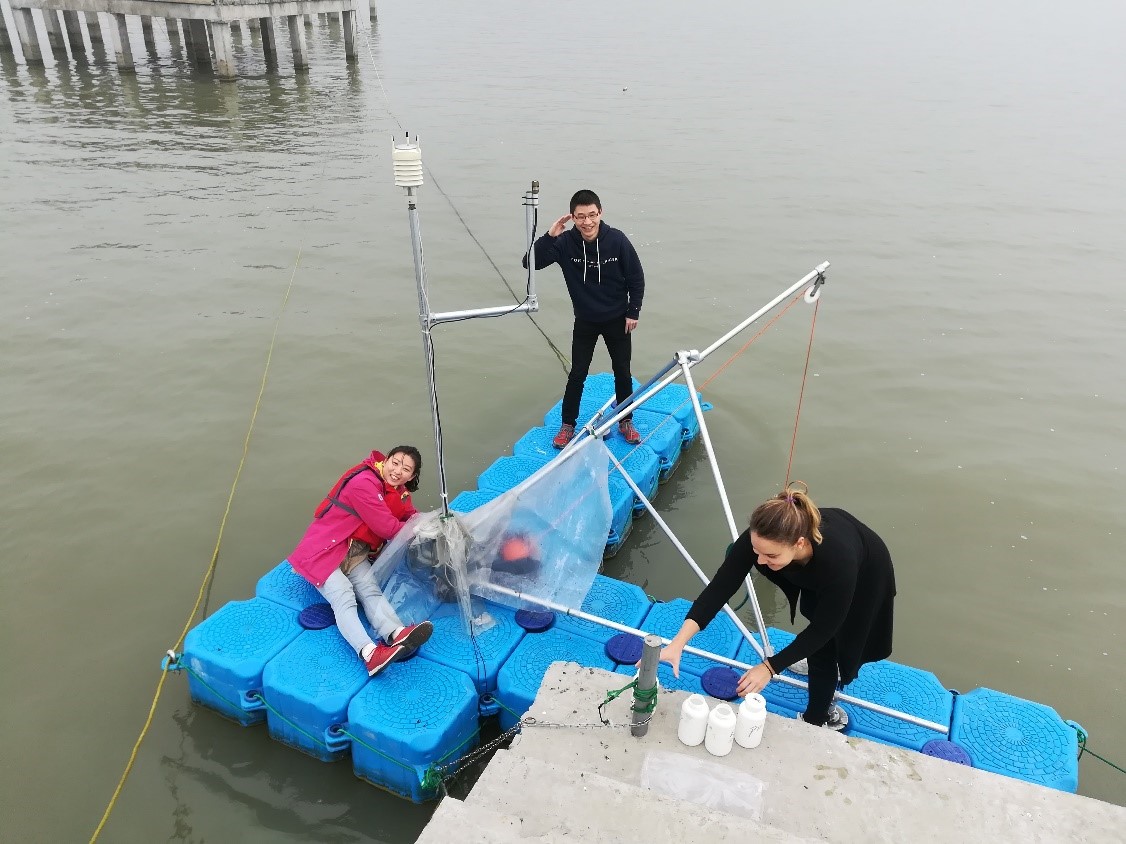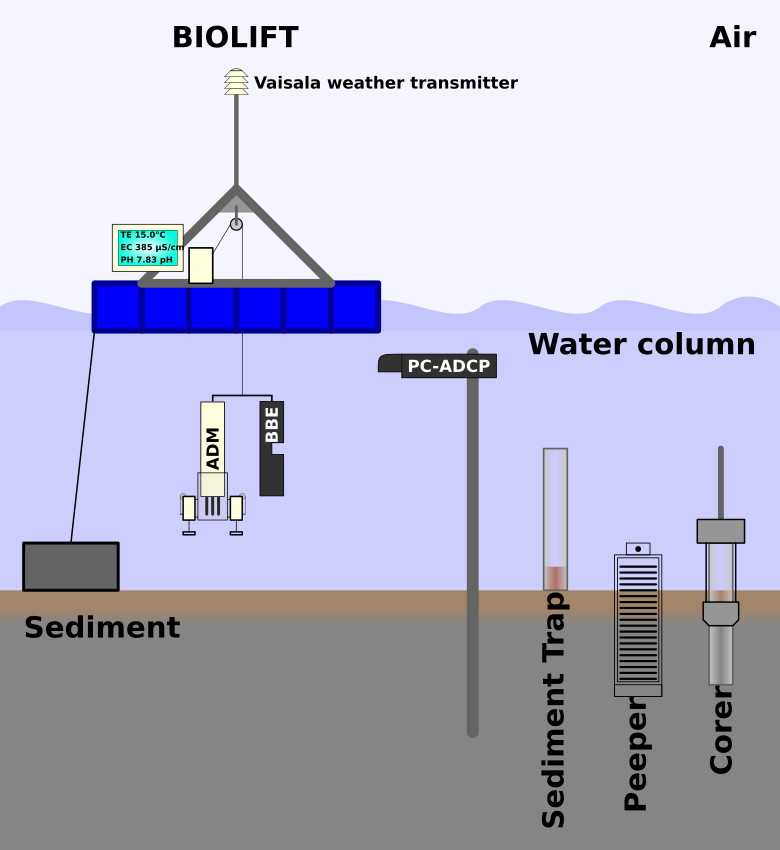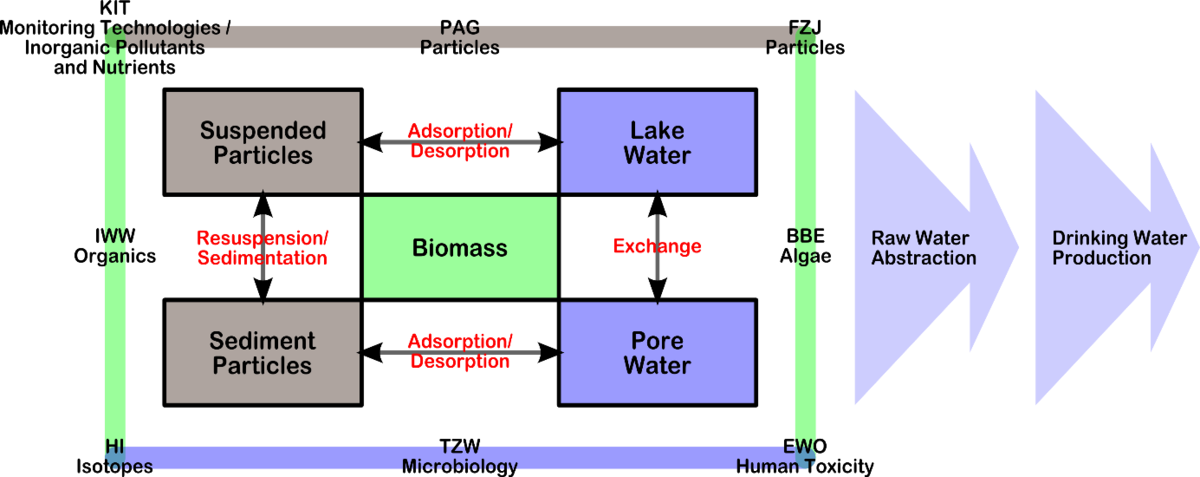SIGN2 - AMORIS: Advanced and Integrated Monitoring Technologies to Assess Ecological Risks of Sediment Resuspension Events at the example of Lake Taihu in China
- Contact:
,
- Funding:
BMBF
- Startdate:
01.09.2018
- Enddate:
31.08.2021
SIGN2
The KIT working group of Environmental Mineralogy and Environmental System Analysis (ENMINSA) is part of the Sino-German research and development Network (SIGN). SIGN aims at ‘assuring water quality from the source to the tap’ within the heavily polluted Taihu basin in China. Since April 2015, SIGN is funded by the Federal Ministry of Education and Research of Germany (BMBF) as part of the Sino-German research and innovation program Clean Water for a period of three years. In the follow-up project SIGN2, which started in September 2018 also funded for three years, German water technologies and management concepts will be further developed and adapted to Chinese requirements in cooperation between scientific and industrial partners.
SIGN is performing an interdisciplinary research and development program to tackle various water related challenges within one of the most densely populated and economically important areas in China. Urban catchments, monitoring and early-warning systems, pollution control, drinking water treatment, drinking water distribution, training and capacity building, market introduction of new technologies, as well as strategies of good-governance form the major fields of work within SIGN.
AMORIS
The SIGN2-AMORIS Project aims at the development of an integrative system for lake monitoring at Lake Taihu in China to asses eco-chemical risks of sediment resuspension events in this large and shallow eutrophic lake. With our approach we will be able to study relevant interaction processes of pollutants across the sediment/water-interface with high resolution. It is intended to establish a sensor based monitoring system consisting of three components:
(1) The BIOLIFT, developed in the frame of our SIGN-DYNAQUA project, will be coupled with a
(2) Pulse-Coherent Acoustic-Doppler-Current-Profiler (PC-ADCP) as well as with the newly developed
(3) PhycoSens multi-algae sensor by BBE.
With this monitoring setup we will be able to measure time-series of physical-chemical-biological water quality depth profiles correlated with meteorological data, three-dimensional flow velocity profiles as well as contents of suspended particulate matter (SPM) over the whole water column. The latter, will involve the development of an advanced evaluation algorithm of the PC-ADCP data as well as fundamental calibration of this method to derive SPM concentrations across the water column with high vertical resolution. This non-contact approach is based on acoustic backscattering intensities by suspended particles in the water and will not disturb the highly sensitive sediment/water-interface.
The sensor-based monitoring system will be accompanied by extensive sampling of the following four environmental compartments in the aquatic ecosystem of Lake Taihu:
(1) lake water,
(2) suspended particulate matter,
(3) sediment, and
(4) sediment pore water.



